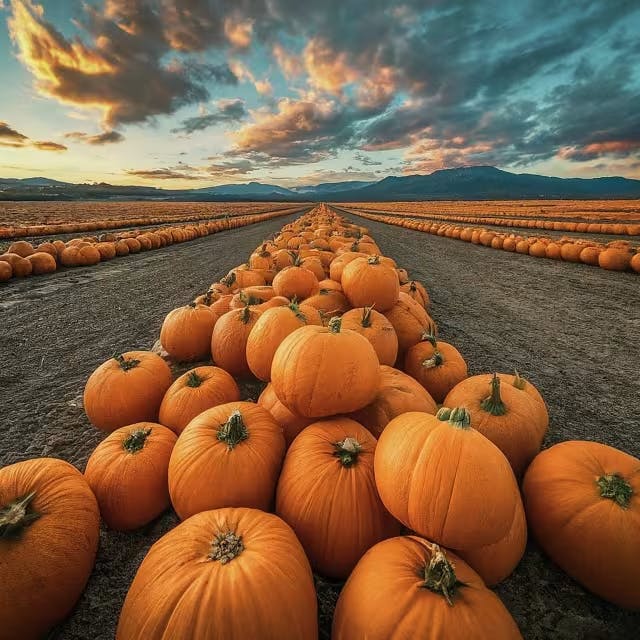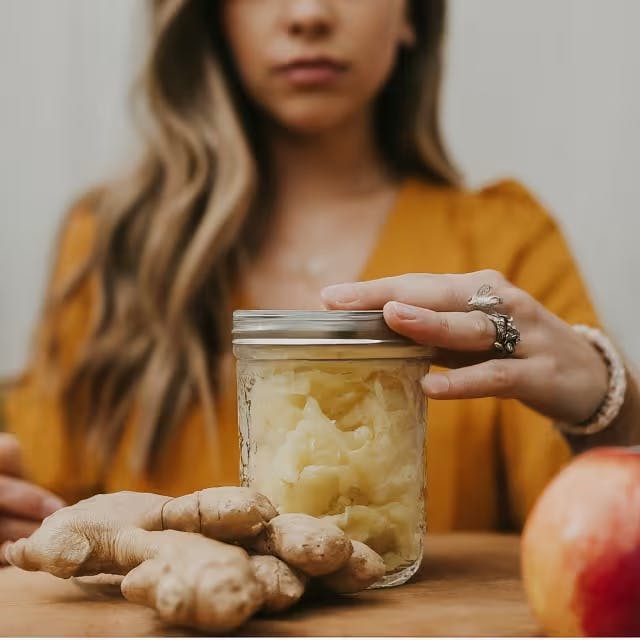Celebrating the First Ginger Harvest
Go4Turf
March 05, 2024

As the seasons change, garden enthusiasts and health-conscious individuals alike rejoice in celebrating the first ginger harvest, a pivotal moment marking the culmination of months of careful cultivation. Known for its vibrant, spicy rhizome packed with health-boosting gingerols, ginger not only adds a kick to culinary creations but also offers a natural remedy for inflammation, arthritis pain, and boosts the immune system. Thriving in the right conditions—warm, humid climates with well-aerated, nutrient-rich soil—this versatile plant provides a rewarding gardening project with a plethora of health benefits, making the first harvest a true cause for celebration.
Key Takeaways
Ginger is a versatile plant that thrives in warm, humid climates and nutrient-rich soil, offering culinary and health benefits, notably reducing inflammation and boosting the immune system.
Cultivating ginger provides a rewarding gardening experience, culminating in a significant moment with the first harvest.
Adhering to specific cultivation tips, such as ensuring the right soil conditions and climate, is crucial for a successful ginger harvest.
Across the United States, ginger harvest festivals celebrate the season's yield, highlighting the cultural and social importance of this spice.
Proper storage and preservation methods are essential to extend the freshness and potency of harvested ginger, ensuring its health benefits and flavors are maintained.
The Unique Benefits of Growing Ginger
Growing ginger presents a myriad of benefits, making it an enriching addition to any garden. This versatile plant thrives in containers and ground alike, offering flexibility for both small and spacious gardens. Its minimal space requirement allows even those with limited gardening area to enjoy the process and results. Ginger's hardy nature means it's resistant to many pests and diseases, simplifying maintenance and care. For gardeners seeking practical advice on nurturing this resilient plant, guidance on soil, watering, and harvesting techniques can be found here, ensuring a bountiful yield.
Moreover, ginger's rapid growth cycle rewards gardeners with quick results, providing a satisfying gardening experience. Beyond its gardening advantages, ginger brings profound health benefits. Consumed worldwide for its medicinal properties, it aids in digestion, alleviates nausea, and boosts the immune system. This makes growing ginger not just a hobby but also a step towards a healthier lifestyle. To further enhance your gardening journey, discover essential tips for growing ginger and galangal, including the best climate conditions and harvest advice, by clicking here.
Essential Tips for a Successful Ginger Harvest
When gearing up for your first ginger harvest celebration, consider timing as your foremost guide. Ginger typically requires eight to ten months of growing time before it’s ready to harvest. For optimal results, plan your harvest when the leaves start to die back, signaling the ginger root has matured.
Observing your ginger plant’s growth cycle can significantly influence the success of your harvest. If you're new to gardening or looking to enhance your skills, incorporating insights from essential gardening tips can make a substantial difference. These tips delve into understanding sunlight, water, and nutrient requirements, which are critical for cultivating healthy ginger plants.
Once the right time arrives, harvesting ginger involves careful excavation around the root. Utilize a small tool to avoid damaging the ginger. Cleaning your harvest is equally essential; rinse the ginger root under cold water to remove soil and debris.
Remember, the joy found in the first harvest extends beyond reaping the fruits of your labor. It's about celebrating the patience, care, and dedication poured into your garden. Embrace the satisfaction of your successful ginger harvest with a sense of accomplishment and joy, shared among fellow gardeners in communities that appreciate the significance of such milestones.

Ginger Harvest Festivals Across the United States
Across the US, local communities take pride in showcasing their agricultural achievements through various festivals, and ginger is no exception. These events provide a fantastic opportunity for both locals and visitors to learn more about ginger cultivation and to celebrate the dedication of the farmers. From cooking demonstrations featuring ginger-inspired dishes to educational workshops on sustainable farming practices, there's something for everyone. Attendees can also enjoy live music, craft stalls, and the chance to buy fresh ginger directly from the growers. It's not just about the harvest; it's a vibrant celebration of community, culture, and the joy of farming.

How to Store and Preserve Your Fresh Ginger
Storing and preserving ginger ensures you can enjoy its freshness and flavor long after harvesting. Here are effective methods to keep your ginger fresh:
Refrigeration: Place unpeeled ginger root in a resealable plastic bag, squeeze out as much air as possible, and store it in the crisper drawer of your refrigerator. This method can keep ginger fresh for up to three weeks.
Freezing: For longer preservation, freeze ginger. Wrap it tightly in aluminum foil or plastic wrap and place it in a resealable bag before freezing. You can grate or slice it directly into dishes without thawing.
Pickle it: Pickled ginger adds a zesty flavor to meals. Slice the ginger thinly, then immerse it in a mixture of vinegar, sugar, and salt. Store in an airtight container in the refrigerator.
Make ginger paste: Blend peeled ginger with a little water and oil to create a paste. Store it in an airtight container in the refrigerator for up to a month or freeze it in an ice cube tray for easy portioning.
For a detailed guide on the benefits of ginger, including nutritional information, visit this comprehensive overview.
Method | Shelf Life | Notes |
Refrigeration | Up to 3 weeks | Place unpeeled ginger in a resealable bag |
Freezing | Several months | Wrap tightly before freezing |
Pickling | Up to 2 months | Store in airtight container |
Ginger Paste | 1 month (refrigerated) | Freeze for longer use |
Choosing the right preservation method depends on how soon you'll use your ginger. Whether added to smoothies, teas, or savory dishes, preserved ginger retains much of its vibrant flavor and health benefits. Celebrating the first ginger harvest showcases the culmination of careful cultivation, community engagement, and the embrace of healthy living. It illustrates the delightful journey from planting to preservation, offering a rich tapestry of knowledge, tradition, and flavor that enriches our diets and gardens alike. Embracing the entire cycle, from soil preparation to storage techniques, ensures that the ginger's full potential is realized, making each harvest a cause for celebration and a step towards a more sustainable and health-conscious lifestyle.
Frequently Asked Questions
How can I celebrate my first ginger harvest?
To celebrate your first ginger harvest, start by incorporating your freshly harvested ginger into various recipes to appreciate its flavor and health benefits firsthand. You can also share your harvest with friends or family as a heartfelt, homegrown gift. Finally, consider preserving some of your ginger using methods like refrigeration, freezing, or pickling to extend its freshness and enjoy your accomplishment for months to come.
What are the benefits of adding ginger to my garden?
Adding ginger to your garden offers numerous benefits. It adapts well to both containers and ground planting, catering to gardeners with limited space. Ginger plants are known for their resilience against pests and diseases, which simplifies maintenance. Additionally, they promote a quick harvest cycle, providing immediate satisfaction from your gardening efforts. Beyond these gardening advantages, ginger also contributes to a healthier lifestyle through its medicinal properties, such as aiding digestion and boosting the immune system.
When is the best time to harvest ginger?
The best time to harvest ginger is eight to ten months after planting, ideally when the leaves begin to die back as this indicates the roots have matured. Harvest ginger carefully to avoid damaging the root. Rinse under cold water to clean.
What are some effective ways to store and preserve ginger?
Storing and preserving ginger effectively can be achieved through several methods, including refrigeration, where unpeeled ginger is stored in a resealable plastic bag in the crisper drawer, and freezing, by wrapping it tightly in aluminum foil or plastic wrap before freezing. Both methods extend the freshness and flavor of ginger, allowing you to enjoy its medicinal properties and zesty taste long after harvesting. For more insights into cultivating and harvesting ginger, along with its health benefits, refer to detailed guides available online.
How does growing ginger support a healthier lifestyle?
Growing ginger at home supports a healthier lifestyle by providing fresh, easily accessible medicinal roots that aid in digestion, alleviate nausea, and boost the immune system. With its simplicity to grow, even in small spaces, and resistance to pests and diseases, gardening enthusiasts can enjoy a rewarding experience with minimal hurdles. This not only enriches one's garden but also encourages a more natural, health-conscious living approach by incorporating ginger's benefits into daily diets.
What activities can I expect at local ginger harvest festivals?
At local ginger harvest festivals, attendees can enjoy an array of activities including cooking demonstrations that showcase ginger-based recipes, educational workshops on ginger cultivation and its health benefits, and the opportunity to purchase fresh ginger directly from the farmers. The festivals also feature live music, craft stalls, and various entertainment options, celebrating not just the harvest but community and cultural connections as well.